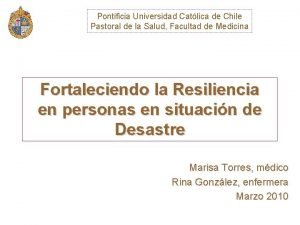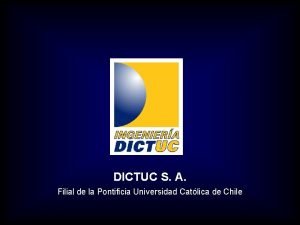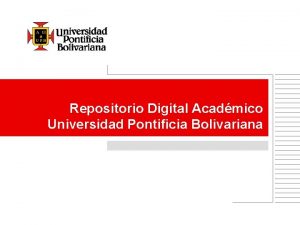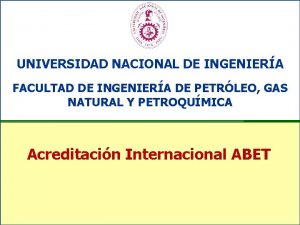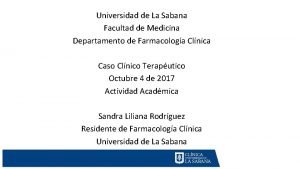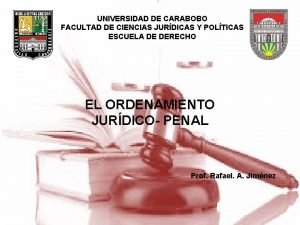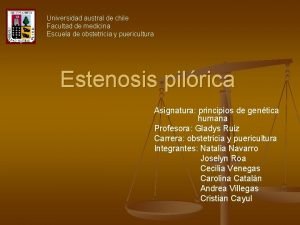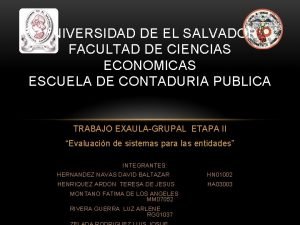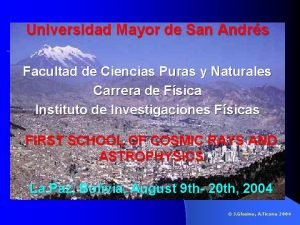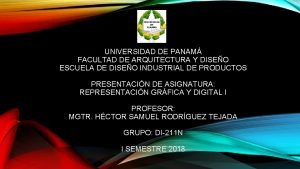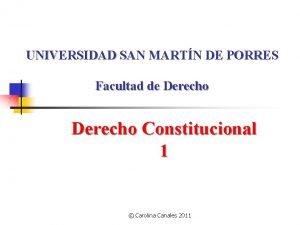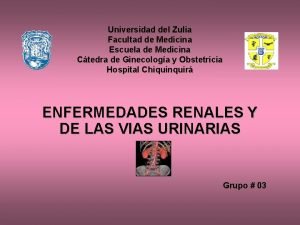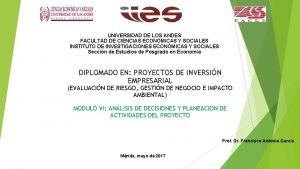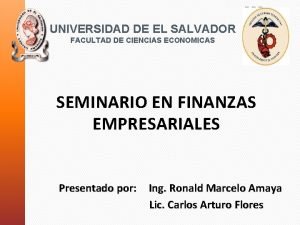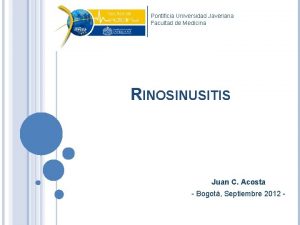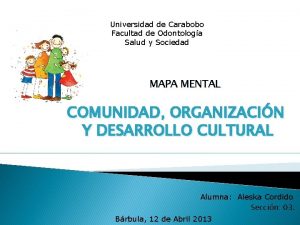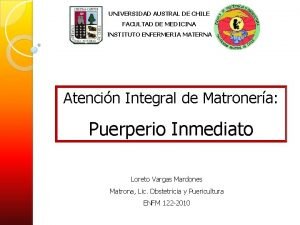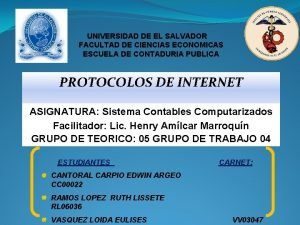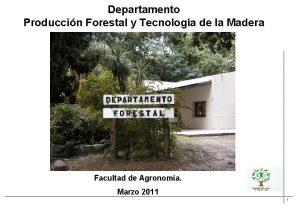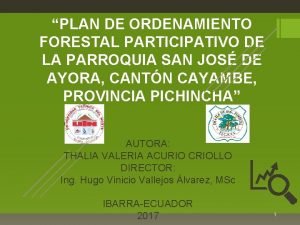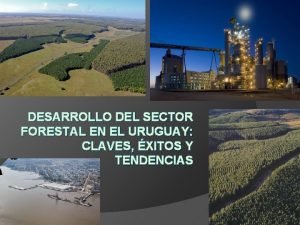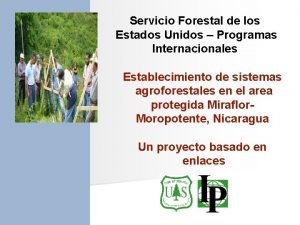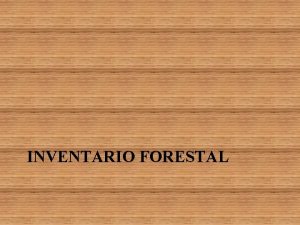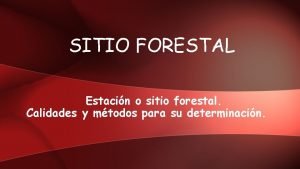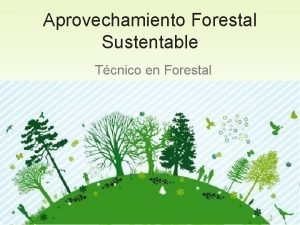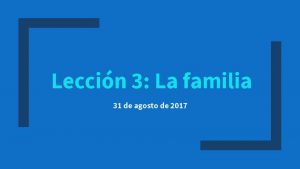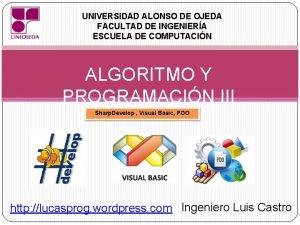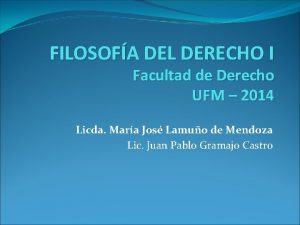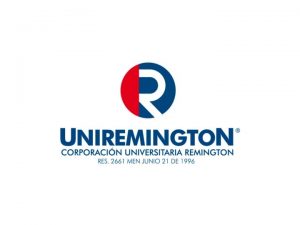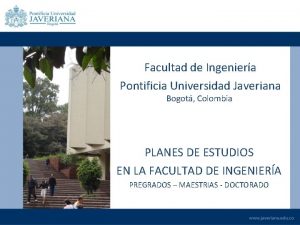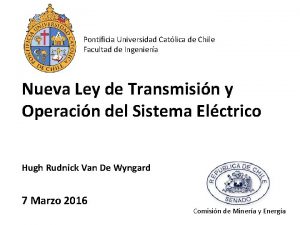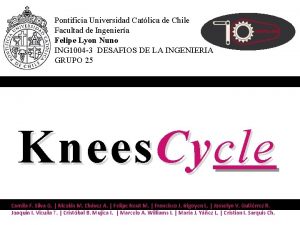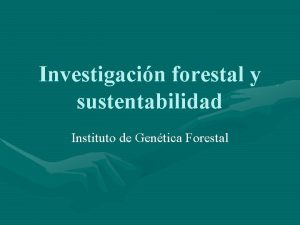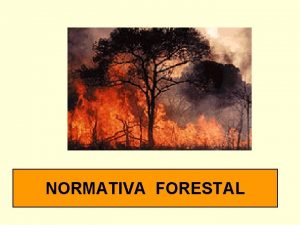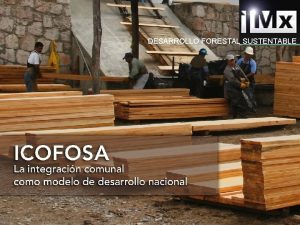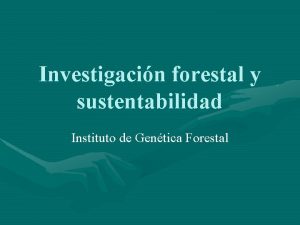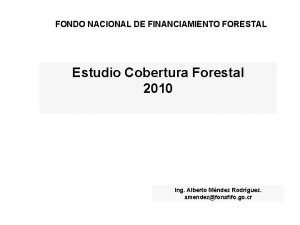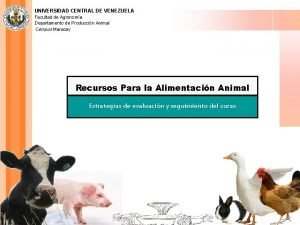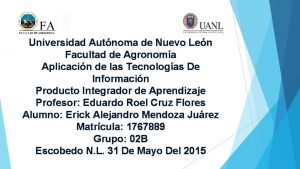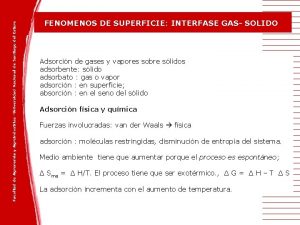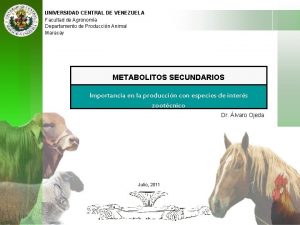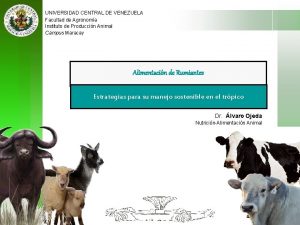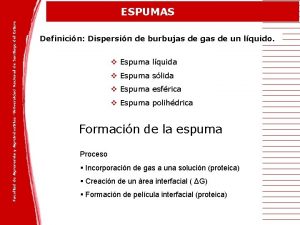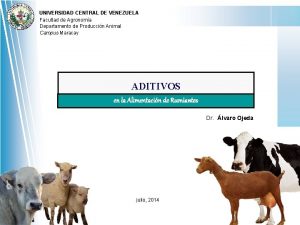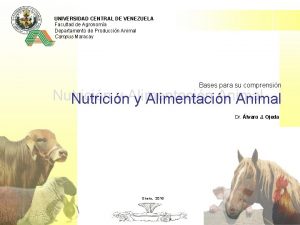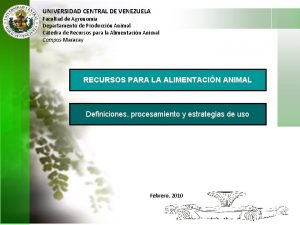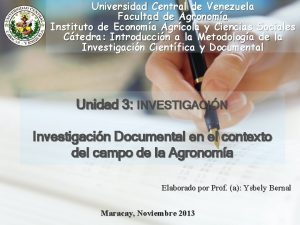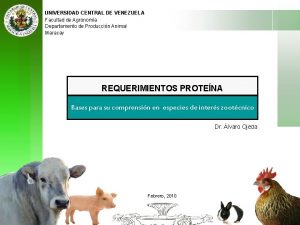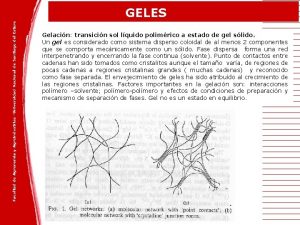Facultad de Agronoma e Ingeniera Forestal Pontificia Universidad





























- Slides: 29

Facultad de Agronomía e Ingeniería Forestal Pontificia Universidad Católica de Chile WHERE AND WHEN DO WE NEED WATER? Dr. Francisco J. Meza Project Mentor Dr. Guillermo Podestá

Objectives § Main objective: Characterize the main components of the agricultural hydrological cycle as well as the possible crop yield outcomes of irrigated sectors under ENSO scenarios. § Specific objectives were: – ENSO impacts on the water cycle and crop growth. – Probability distribution functions of potential and actual evapotranspiration – Identify regions and seasons that are particularly sensitive to water scarcity – Perform preliminary estimates of the benefits of using climate forecasts in agricultural water resources planning.

Region Under Study Maipo River Basin

Climatic Variability in Chile and El Niño Phenomenon Mean Annual Precipitation (1950 -1999) at six Chilean Localities Locality Lat (S) El Niño Normal La Niña Pudahuel 33. 23 412. 9 217. 8 231. 0 Curicó 34. 58 1003. 8 589. 9 612. 3 Concepción 36. 46 1513. 8 1091. 5 1095. 7 Temuco 38. 46 1258. 0 1087. 9 1116. 9 Valdivia 39. 38 2237. 9 1946. 3 1983. 0 Puerto Montt 41. 26 1765. 4 1719. 5 1806. 4

Climatic Variability in Chile and El Niño Phenomenon § In central Chile, ENSO does have an influence on other meteorological variables that play a fundamental role on reference evapotranspiration (Meza, 2005)

Water Demands § Surface of crops was determined in each section of the basin based on the Chilean Agricultural Census § Crop Potential ET was calculated using FAO crop coefficients – ETp = Kc * ETo § Irrigation was triggered ony when soil water budget fell below a threshold level

Soil Water Balance Algorithm

ENSO Effect on Water Demands in Central Chile

ENSO Forecats for Water Resurces Management § In Chile, basins are regulated by the “Water Code Bill” § There are water rights that guarantee specific amouts to the holders. This limits the possibility of allocating water according to the demand (i. e. conditioned on ENSO) § Only in a situation of severe water scarcity it will be possible to use climatic-oceanic indices

Getting the right framework § Up to this moment the objectives were achieved – ENSO does play a role determining different evapotranspiration rates – Greater demands are observed in the second section (“where”) and during La Niña years (“when”) – Due to regulatory issues the real decision maker for water allocation is the farmer not the local authority § Can farmers take advantage of ENSO information for irrigation management?

Facultad de Agronomía e Ingeniería Forestal Pontificia Universidad Católica de Chile Use of ENSO driven climatic information for optimum water allocation International Workshop on Climate Prediction and Agriculture: Advances and Challenges. May 9 -13, 2005. Dr. Francisco J. Meza

Droughts in Chile § Occurrence Droughts Source: Urrutiaof de Severe Hazbun et al, 1993.

Mean Economic Impact of Droughts in Chile (Source: MOP-UC, 1997) Basin Number

Can we take advantage of ENSO information for water resources management problems? § Requisites of valuable information (ENSO forecast) Climatic Predictability + Systems Vulnerability + Decission Capacity Hansen, J. W. , 2002

Climatic Predictability (ENSO Forecast)

Irrigation Management § When water is not a limiting factor, irrigation is reduced to the management of the soil water budget to minimize plant stress. § When water is scarce the operation of irrigation increases in complexity, becoming a traditional resource allocation problem. § Optimum allocation of resources is achieved when the consequences associated to all possible combinations of alternatives and states of the variable are known.

Traditional Approach § Assumes that Water Demands are constant (i. e. fixed at climatological values) § Uses Doorenbos and Kassam empirical equations or Jensen´s formula to estimate yield changes as a function of actual evapotranspiration Jensen´s formula (Jensen, 1968)

Traditional Approach § Mathematical programming formulation Objective Function Constraints

ENSO based Approach § Since ENSO does influence reference evapotranspiration, it is reasonable to incorporate that information and perform an optimization conditioned on ENSO phase § The problem is rewritten as Where o represents El Niño, Normal or La Niña phase

Expected Value of Information § The information (ENSO forecast) will be valuable if at least one of the optimal actions (i. e. irrigation strategies) associated with the forecast information differs from the one selected without forecast. § According to Bayes´ theorem one can calculate the expected value of information as:

Case Study Maipo River Basin § Parameters used

Results § Expected Value of Information for the different phases of ENSO § Available water at each irrigation time was equivalent to 55 mm

Results § Expected Value of Information as a function of different levels of water supply

Results § So far results show that ENSO information can be used to select an irrigation strategy, representing a case of perfect information (i. e. the forecasted evapotranspiration is equal to the observed one in susequent periods) § A more realistic approach should be a case where irrigation strategy is revised based on – a) Previous water demands – b) Forecasted evapotranspiration § In that situation the decision maker can correct “wrong” allocations due to climate variability

Results § Evolution of the objective function of the decision maker that allocates water using El Niño forecasts and the one that bases his decision on historical ETc values Value of Forecast

Conclussions and Future Steps § In locations where ENSO signal has an effect on water demands there is an economic potential for climate forecasts in water resources allocation at the farm level. § The expected value of information is not a monotonic function because when water is very scarce the allocation decissions are limitted. § The next step is to refine the translation of yields because they also are affected by climatic variability (use process based crop simulation models)

Where and When do we Need Water? § Summary of Scientific Activities § √ Regional Water Demand Model Conditioned on ENSO phases § √ Assessment of potential use of ENSO information for Irrigation Management § √ Communication and Dissemination – 84 th AMS Annual Meeting, Seattle Washington – Local Seminar “Climatic Variability and Change: Issues in Water Resources, Agriculture and Forest Ecosystems” § § § Dr Carlos Nobre, CPTEC Dr Bonifacio Fernandez. School of Engineering Dr Francisco Meza. ATI participant

Summary of Scientific Activities – 85 th AMS Annual Meeting, San Diego, California – Papers: § Meza, F. J. 2005. Use of ENSO driven climatic information for optimum irrigation under drought conditions: Preliminary assessment based on model results. Climate Research: submitted. § Meza, F. J. 2005. Obtaining daily precipitation parameters from meteorological yearbooks. Agricultural and Forest Meteorology: submitted. § Meza, F. J. 2005. Variability of reference evapotranspiration and water demands. association to ENSO at the Maipo river basin, Chile. Global and Planetary Change: In press

§ "You don't get points for predicting rain. You get points for building arks. " § – Lou Gerstner, IBM CEO (Quoted by Richard Katz, UCAR) § QUESTIONS? ?
 Pontificia universidad católica de chile
Pontificia universidad católica de chile Pontificia universidad javeriana filiales
Pontificia universidad javeriana filiales Universidad pontificia bolivariana repositorio
Universidad pontificia bolivariana repositorio Universidad nacional de ingeniera
Universidad nacional de ingeniera Holtler
Holtler Universidad de carabobo facultad de derecho
Universidad de carabobo facultad de derecho Casosclinicosnn
Casosclinicosnn Universidad de el salvador facultad de ciencias economicas
Universidad de el salvador facultad de ciencias economicas Facultad de ciencias universidad mayor
Facultad de ciencias universidad mayor Facultad de arquitectura universidad de panama
Facultad de arquitectura universidad de panama Universidad san martin de porres facultad de derecho
Universidad san martin de porres facultad de derecho Universidad del zulia facultad de medicina
Universidad del zulia facultad de medicina Universidad de los andes facultad de ciencias
Universidad de los andes facultad de ciencias Universidad de el salvador facultad de ciencias economicas
Universidad de el salvador facultad de ciencias economicas Facultad de informatica universidad de panama
Facultad de informatica universidad de panama Universidad javeriana - facultad de medicina
Universidad javeriana - facultad de medicina Universidad de carabobo facultad de odontologia
Universidad de carabobo facultad de odontologia Universidad austral de chile facultad de medicina
Universidad austral de chile facultad de medicina Universidad de el salvador facultad de ciencias economicas
Universidad de el salvador facultad de ciencias economicas Prefettura della casa pontificia
Prefettura della casa pontificia Departamento forestal
Departamento forestal Plan de ordenamiento forestal
Plan de ordenamiento forestal Suelos de prioridad forestal
Suelos de prioridad forestal Servicio forestal de los estados unidos
Servicio forestal de los estados unidos Hipsometro jal
Hipsometro jal Sitio forestal
Sitio forestal Dibujo de aprovechamiento forestal
Dibujo de aprovechamiento forestal 1. ingeniera médica programadora periodista hijastra
1. ingeniera médica programadora periodista hijastra Sharpdevelop
Sharpdevelop Facultad de derecho ufm
Facultad de derecho ufm
